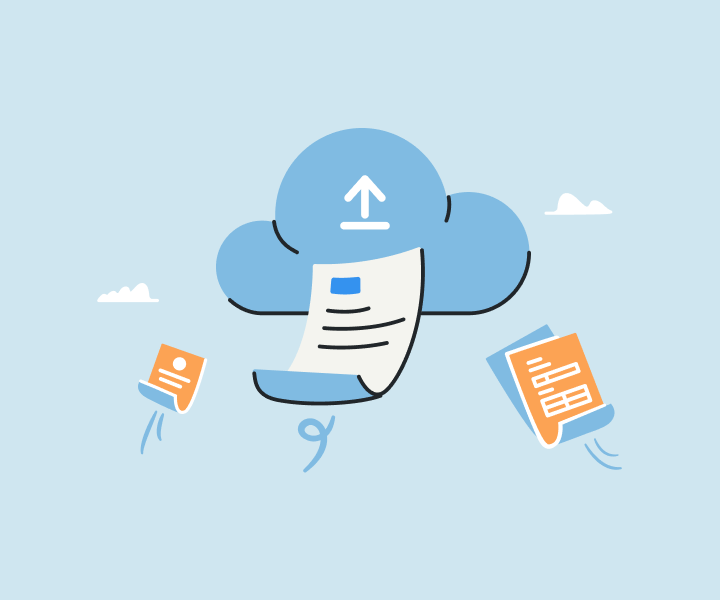Get all the expert help you need for only $20 when you’re 25 or younger with TurboTax
What is a T4 Slip and How Do You Get Yours?
TurboTax Canada
January 23, 2025 | 3 Min Read
Updated for tax year 2025

Key Takeaways
- A T4 slip, or Statement of Remuneration Paid, is a document that summarizes all of the money paid by an employer to an employee during a calendar year.
- Most employers send your T4 electronically by February.
- Using Auto-fill My Return you can directly import tax slips from the CRA to TurboTax.
What is a T4?
A T4 slip: Statement of Remuneration Paid, is a document that summarizes all of the money paid by an employer to an employee during a calendar year.
Not only does it include how much income you earned, but it also shows how much you have contributed to Employment Insurance (EI), Canada Pension Plan (CPP), and how much tax you’ve already paid for the year (i.e. amounts deducted at source).
How do I get my T4?
Generally, you receive your T4 from your employer. Your employer has until the end of February to provide your T4 slip by mail, online or in-person.
More companies have been sending their employees’ digital softcopy of their T4. You might be able to access your T4 slip through your company portal with your employee login. Keep an eye out on your emails or any updates at work to see how to access your T4.
If you have a CRA My Account, you can access your T4 slips online account as soon as they are filed to CRA by the employer, and usually, these should be available in mid-March. You can also access T4 slips from previous years on your account.
T4 Explained
The T4 can seem a little complex at first, but here’s a quick guide to understand everything on the slip.
What do the boxes on my T4 mean?
- Box 10: Province of employment
- Box 12: Social insurance number
- Box 14: Employment income – Line 10100
- Box 16: Employee’s CPP contributions – Line 30800 and Line 22215
- Box 17: Employee’s QPP contributions – Line 30800 and Line 22215
- Box 18: Employee’s EI contributions – Line 31200
- Box 20: RPP contributions – Line 20700
- Box 22: Income tax deducted – Line 43700
- Box 24: EI insurable earnings
- Box 26: CPP/QPP pensionable earnings
- Box 28: CPP/QPP, EI, and PPIP exemptions
- Box 44: Union Dues – Line 21200
- Box 46: Charitable donations – Line 34900
- Box 52: Pension adjustment – Line 20600
- Box 55: Employee’s PPIP premiums:
- If you were a resident of Quebec on December 31 of the tax year – Line 31205
- If you were a resident of a province or territory other than Quebec on December 31 of the tax year – Line 31200
- Box 56: PPIP insurable earnings
- Box 42: Employment commissions – Line 10120
- Box 66: Eligible retiring allowances – Line 13000
- Box 67: Non-eligible retiring allowances – Line 13000
- Box 71: Indian (exempt income) – Employment
- Box 77: Workers’ Compensation Benefits (WCB) repaid to the employer –Line 22900
- Box 85: Employee-paid premiums for Private Health Services Plans (PHSPs) – Line 33099
In this interview, Melissa Grelo, co-host of CTV’s The Social Today, sits down with TurboTax in-house tax expert Susan Watkin to walk through the T4 in detail.
What are the different T4 slips?
Besides the T4, there are six other different types of T4 slips including:
- T4A – Statement of Pension, Retirement, Annuity, and Other Income
- T4A(OAS) – Statement of Old Age Security
- T4A(P) – Statement of Canada Pension Plan Benefits
- T4E – Statement of Employment Insurance and Other Benefits
- T4RIF – Statement of income from a Registered Retirement Income Fund
- T4RSP – Statement of RRSP Income
What if there’s a mistake on my T4?
Mistakes can happen on T4s. If you suspect yours has an error, you should get in touch with your employer. If they do not correct the error by the time your taxes are due, you must complete your taxes as an estimate and fix them later, if necessary.
Your taxes are done right, any way you choose.
File on your own, with live help, or hand your taxes off to an expert.
Get StartedRelated articles

© 1997-2024 Intuit, Inc. All rights reserved. Intuit, QuickBooks, QB, TurboTax, Profile, and Mint are registered trademarks of Intuit Inc. Terms and conditions, features, support, pricing, and service options subject to change without notice.
Copyright © Intuit Canada ULC, 2024. All rights reserved.
The views expressed on this site are intended to provide generalized financial information designed to educate a broad segment of the public; it does not give personalized tax, investment, legal, or other business and professional advice. Before taking any action, you should always seek the assistance of a professional who knows your particular situation for advice on taxes, your investments, the law, or any other business and professional matters that affect you and/or your business.









